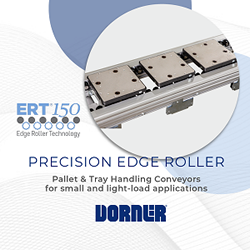The benefits of automating a medical research lab include sifting through massive amounts of data in a short period of time.
Contributed by | The Association for Advancing Automation (A3)
Scientists at a National Institutes of Health laboratory search for the right combinations of chemicals to fight diseases. In this next installment in the “Why I Automate” series, researcher Chris Austin describes how robots can test millions of potential drug combinations that would overwhelm human capabilities.
There are 7,000 known diseases but medicines exist to battle only 500 of those illnesses. The laboratory programmed robots that are traditionally used in the manufacturing space, but specially engineered to work in a clean laboratory environment. They handle plates with diseased cells and test against 450,000 different chemical combinations to find solutions. Not one of the tests is duplicated and this shows how automated equipment can learn to handle unique data.
Automated equipment in labs can work without harm near biological contaminants, radioactive material, and toxic chemotherapy compounds. Companies in all industries handling hazardous materials can automate and make more strategic use of people and keep them safe.
In the video clip, Mr. Austin describes a critical moment in the testing of leukemia cells and how the automated process uncovered a solution available to people in months that would have taken researchers years to discover:
About A3 & the “Why I Automate” Series:
 The Association for Advancing Automation (A3) has launched a new website, www.a3automate.org. This blog-based website will tell the real story about companies that are successful because of automation, and how automation makes a positive impact on society.
The Association for Advancing Automation (A3) has launched a new website, www.a3automate.org. This blog-based website will tell the real story about companies that are successful because of automation, and how automation makes a positive impact on society.
The Association for Advancing Automation is the global advocate for the benefits of automating. A3 promotes automation technologies and ideas that transform the way business is done. A3 is the umbrella group for Robotic Industries Association (RIA), AIA - Advancing Vision + Imaging, and Motion Control Association (MCA). RIA, AIA, and MCA combined represent 750 automation manufacturers, component suppliers, system integrators, end users, research groups and consulting firms from throughout the world that drive automation forward.
The content & opinions in this article are the author’s and do not necessarily represent the views of RoboticsTomorrow
Comments (0)
This post does not have any comments. Be the first to leave a comment below.
Featured Product


